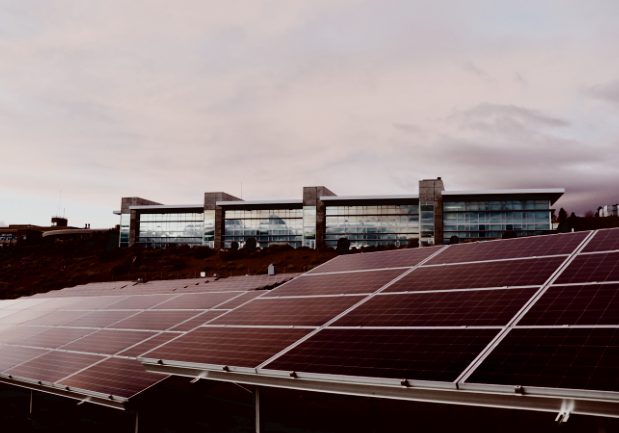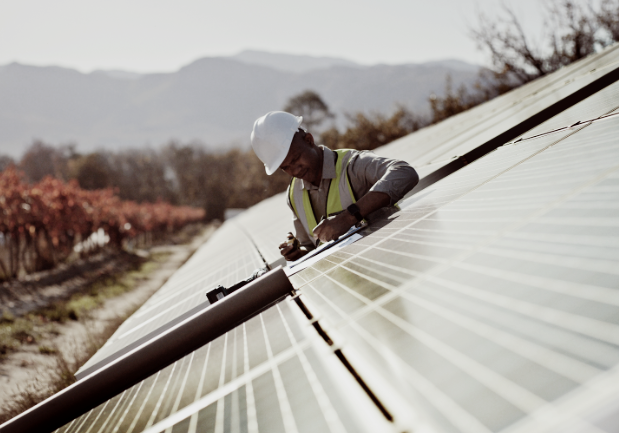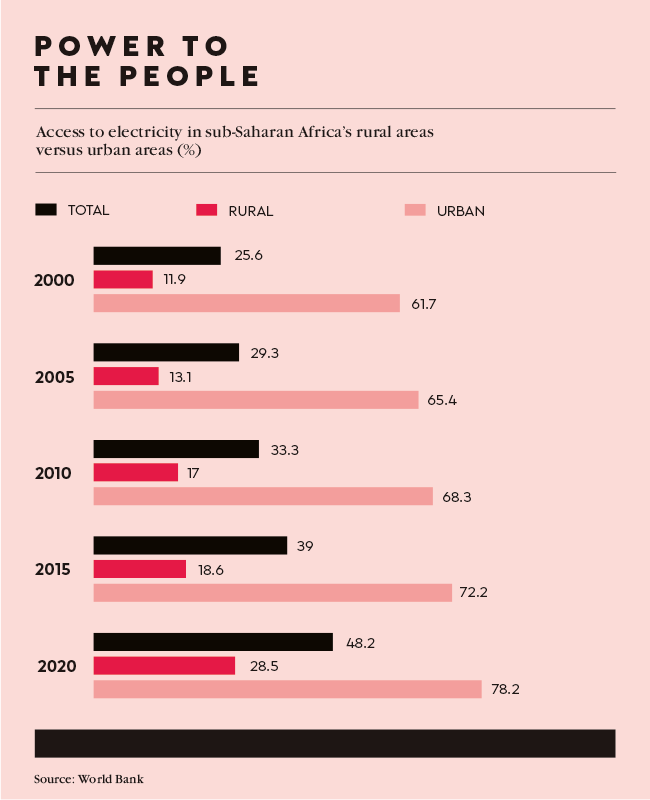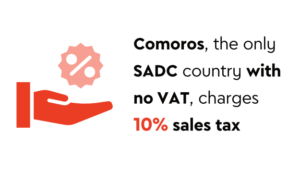SDG 7, the seventh of 17 Sustainable Development Goals that the UN hopes to achieve by the year 2030, aims to ‘ensure access to affordable, reliable, sustainable and modern energy for all’. That said, ‘all’ is a big word, while 2030 creeps closer, universal access to electricity seems as far away as ever. According to the World Bank, ‘at current rates of electrification, over a half billion people in sub-Saharan Africa will still be without electricity in 2030 unless the current electrification pace is tripled’.
There is a potential solution. In its Minigrids for Half a Billion People report, the World Bank identifies small-scale hybrid grids – renewable energy (notably solar) supported by battery storage – as the most economical solution to close the continent’s energy-access gap before that 2030 deadline.
‘While Africa remains the least electrified continent, it also has the biggest potential for solar mini-grid deployment,’ says Gabriela Elizondo Azuela, manager of the World Bank’s Energy Sector Management Assistance programme (ESMAP). ‘Solar mini-grids can reach populations today that would otherwise wait years to be reached by the grid. They have the potential to transform the power sector in sub-Saharan Africa.’
And not only in remote areas. Speaking at the recent Africa Energy Indaba, held in Cape Town, Taru Madangombe, vice-president of power and grid for Middle East and Africa at Schneider Electric, outlined how mini- and micro-grids are providing a viable solution to the continent’s energy ‘trilemma’. (The term, coined by the World Energy Council, refers to the need to balance affordability against access, energy security and environmental sustainability.)
‘We are no longer seeing the adoption of micro-grids in rural areas alone, but also in major cities where we are trying to stabilise energy security,’ Madangombe said in a panel discussion.
‘This is particularly relevant across the African continent, which has been faced with major load-shedding challenges for a number of years. Also, the deployment of micro-grids in cities makes it more attractive for investors, particularly when aligned with respective country tariff rebates and cost-incentive programmes, as well as when an off-taker has been secured.’
He pointed to two examples from Schneider Electric’s portfolio – an 11.4 MW micro-grid with rooftop solar, fuel cells and battery storage that enabled an under-construction terminal at New York City’s JFK International Airport to be powered during electrical outages; and a small micro-grid in a remote village in Limpopo, South Africa, which powers a bakery and a community centre. In the latter case, he said, ‘community members no longer have to drive kilometres to purchase essentials like bread, and the provision of energy has led to the construction of a sport training centre for children and other projects’.
Examples such as those show why ESMAP has its sights set on taking mini-grids mainstream. ‘The deployment of solar mini-grids has markedly accelerated in sub-Saharan Africa, from around 500 installed in 2010 to more than 3 000 installed today, and a further 9 000 planned for development over the next few years,’ the World Bank reported recently.
Their analysts put that growth down to a combination of falling costs of key components, the introduction of new digital solutions, an expanding field of mini-grid developers, and growing economies of scale.
‘In Africa, mini-grids are on track to provide power at a lower cost than many utilities,’ the report said. ‘The cost of electricity produced by mini-grids could be as low as US$0.20 per kWh by 2030, making it the least-cost solution for more than 60% of the population.’
Out of necessity, the continent’s mining houses have emerged as pioneers of mini- and micro-grids. In some cases (notably South Africa), mines have turned to these small-scale hybrid energy systems because local utility power supply is unreliable. In most cases, mines are located in remote areas, where utility grid power lines simply don’t reach, and where energy self-reliance is the only way to survive. Here, hybrid micro-grids have the added benefit of batteries that provide continuous renewable solar and wind energy – even when the sun doesn’t shine or the wind doesn’t blow.
‘As most mines are in isolated locations, onsite energy management is critical to maintain power and productivity,’ Malvin Naicker, MD of Hitachi Energy, sub-Saharan Africa, said ahead of February’s Mining Indaba. ‘The initial direction to transition away from fossil fuels is a hybrid scenario whereby mines rely less on diesel and more on renewable sources for power generation. From a hybrid model, mines can then become self-sufficient by transitioning to grid-connected micro-grids for their power generation.’

The Fekola mine, owned by Canadian gold producer B2Gold, is a good example. Fekola is in south-west Mali, about 450 km due west of the capital Bamako and near the Senegalese border. It’s in the middle of nowhere, which compounds the high cost of transporting the heavy fuel oil needed to run the mine’s 64 MW power-generating plant. B2Gold solved the problem by installing a hybrid onsite set-up, comprising a 30 MW solar PV plant and a 17.3 MW/15.4 MWh energy-storage system to run alongside the existing plant.
The hybrid micro-grid allows the mine to optimise full electricity generation using a combination of solar and energy storage, while reducing its dependence on imported fuel. The estimated 39 000 ton reduction in CO2 emissions only adds to the benefits.
In Egypt, meanwhile, Centamin’s Sukari gold mine is installing a large hybrid project, comprising a 36 MW solar farm and 7.5 MW battery storage system. Renewables supplier Juwi has described the project as the biggest solar hybrid project in the world, claiming that it will provide savings of up to 22 million litres of diesel per year.
Dozens of similar projects are now either in construction or already operational in Africa. But while much of the mini- and micro-grid activity is centred on remote mine sites, the World Bank report identifies other opportunities across the continent.
‘Mini-grids are not a new phenomenon,’ the Mini-grids for Half a Billion People report explains. ‘Nearly all centralised electricity grid systems began as isolated mini-grids that were connected to each other over time.’
That first generation of mini-grids drove the development and industrialisation of modern economies such as Brazil, China, the US and more – much like the modern, second generation of mini-grids is now doing in many developing countries.
‘These systems are typically small and isolated, powered by diesel or hydro, and built by local communities or entrepreneurs primarily to provide rural households with access to electricity, especially in areas not yet served by the main grid,’ the report states. And while thousands of these systems were built during the 1980s, 1990s and early 2000s, many were overtaken by national grids. But, as the report concludes, the ones that still exist are now prime candidates for hybridisation with solar PV systems. Half a billion people are counting on it.



















